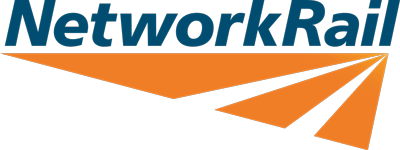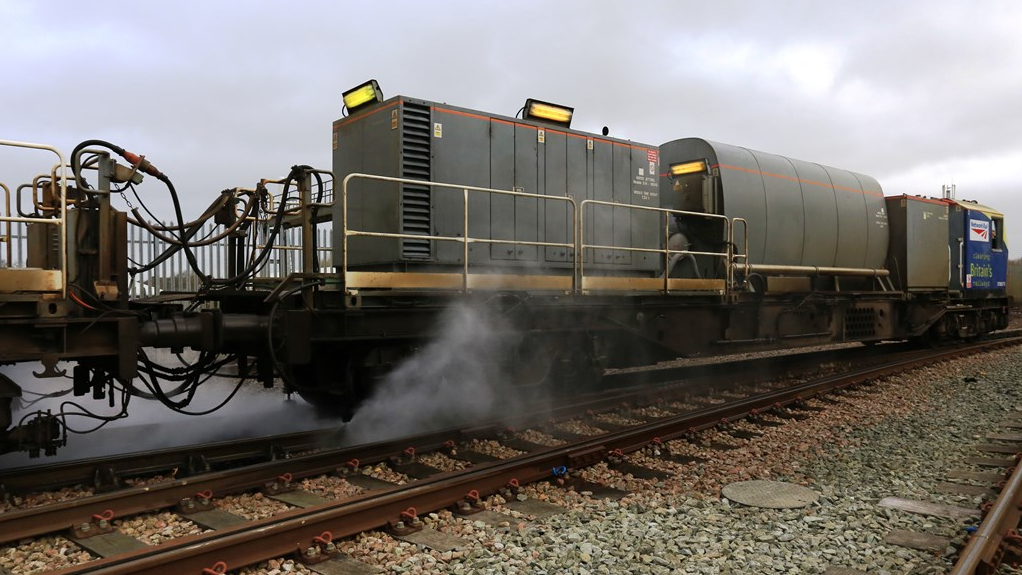Monday 31 Oct 2022
Getting ready for autumn – Leaves on the line
- Region & Route:
- Southern
- | Southern: Wessex
Network Rail and South Western Railway are strengthening their fight against leaves on the line to keep trains running safely and reliably in Surrey, Hampshire, Wiltshire and Dorset this autumn.
Every year, thousands of tonnes of leaves fall on the railway. When crushed under train wheels they form a hard Teflon-like surface on top of the track – the railway’s equivalent to black-ice on the road – that makes it more difficult for trains to grip and drivers have to adjust with gentler and more time-consuming acceleration and braking.
We use a fleet of special trains armed with high-power water jets to blast this ‘leaf mulch’ off the tracks, with jets powerful enough to cut steel, but now we’re running those services at higher frequencies so key parts of the railway will be treated twice every 24 hours.
We’re also trialling using high-definition cameras fitted to our treatment trains to collect pictures of the rails so we can develop artificial intelligence software in the future which will help us to paint a picture of leaf-mulch contamination and identify ‘hot-spot’ areas that may need extra attention
Last year’s accident outside Salisbury involved slippery rails, showing how important it is that the tracks are kept clear. Now we're ready to kick off another autumn season with new weapons in our armoury. On top of our already robust autumn action plan, here are the new things we’re doing this year:
- Our leaf-busting trains are now scheduled to treat key parts of the railway twice every 24 hours, seven days a week.
- We're trialling HD cameras on treatment trains and some passenger trains to collect images of the rail so that we can identify areas that need extra treatment. This data will be used to develop artificial intelligence software in the future that will monitor and trigger treatment in areas that need extra attention.
- We have been working closely with Drivers, Signallers and Mobile Operation Managers to identify 45 leaf fall sites which will be marked with new signage to alert drivers.
- We have rewritten timetables to run leaf-busting trains more slowly at those 45 sites, increasing the effectiveness of their water jets and the laying of a grippy paste on the tracks.
- Train drivers are now receiving an enhanced briefing and new drivers will receive additional training material.
- On the diesel fleet of trains, a system which lays sand onto the rails to increase grip is being enhanced to drop more sand onto the tracks.
- We are trialling new technology to monitor the wheel slip and slide protection system (much like traction control in a car) on our trains.
- We’ve installed 11 extra traction gel applicators in key areas to apply a mixture of sand and gel to the rails to improve train grip, so we now have more than 51 gel applicators.
A tremendous amount of effort across the rail industry has gone into collaboratively working together to make our railway safer this autumn.
Mark Killick, Network Rail's Wessex route director, said: “Last year’s collision at Salisbury is a stark reminder of the very real risk autumn presents to the railway and the need for us to constantly evolve our approach to managing leaf fall.
“For the past year we’ve been working to create new and innovative solutions to protect our passengers and keep trains running reliably throughout autumn.
“As we reflect on the year past, I’d like to pay tribute to the community in Salisbury and the emergency services who worked tirelessly in difficult circumstances to support each other.”
Claire Mann, South Western Railway’s managing director, said: “The safety of our customers and colleagues is our number one priority, so we are constantly reviewing and updating our autumn action plans to embrace new technology and safely keep our customers moving.
“Every autumn leaves on the line cause real challenges for the railway and we’re working tirelessly in partnership with Network Rail to mitigate the problems they cause.
“The incident in Fisherton Tunnel was one of my most challenging days on the railway and it is important all parties work together to reduce the risk of it happening again.”
Contact information
Passengers / community members
Network Rail national helpline
03457 11 41 41
Latest travel advice
Please visit National Rail Enquiries
Journalists
Tala Ghannam
Media Relations Manager - National
Network Rail
020 3356 8700
tala.ghannam2@networkrail.co.uk
About Network Rail
We own, operate and develop Britain's railway infrastructure; that's 20,000 miles of track, 30,000 bridges, tunnels and viaducts and the thousands of signals, level crossings and stations. We run 20 of the UK's largest stations while all the others, over 2,500, are run by the country's train operating companies.
Usually, there are almost five million journeys made in the UK and over 600 freight trains run on the network. People depend on Britain's railway for their daily commute, to visit friends and loved ones and to get them home safe every day. Our role is to deliver a safe and reliable railway, so we carefully manage and deliver thousands of projects every year that form part of the multi-billion pound Railway Upgrade Plan, to grow and expand the nation's railway network to respond to the tremendous growth and demand the railway has experienced - a doubling of passenger journeys over the past 20 years.
Follow us on Twitter: @networkrail
Visit our online newsroom: www.networkrailmediacentre.co.uk

